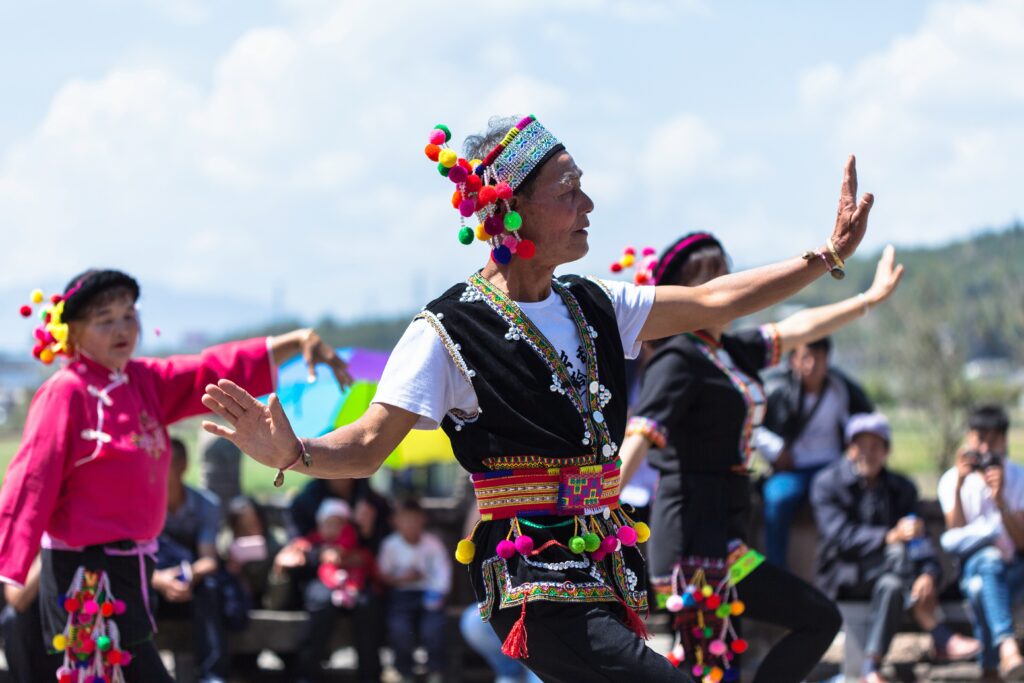Facts you should adhere to before visiting Singapore
- About Singapore
- How to reach Singapore
- How to Travel around Singapore
- Best Time to Visit Singapore
- Accommodation
- Activities to do in Singapore
- Tips for Shopping in Singapore
- Travel with children in Singapore
- Festivals
- Drinking and Nightlife
- Street Theatre
About Singapore
The naturalist, William Hornaday of Singapore, described the city as “the handiest and most magnificent I ever saw,” as beautifully planned and meticulously carried out as though only one person had constructed it. It is comparable to a large desk with several drawers and cubbies where everything has a home and is always accessible. Even today, despite the tiny island’s transition from an endearingly chaotic colonial port that personified the exoticism of the East into a spotless, futuristic shrine to commerce, this brief assessment still feels appropriate. During this time, Singapore developed a reputation for being soulless, which mainly merited. However, these days, the city-state has a more laid-back and intriguing personality that strikes a healthier balance between Westernized modernity and the city-traditions.
How to reach Singapore
Flying to Singapore is straightforward because the city-state is one of Southeast Asia’s major aviation hubs and frequently serves as a stopover on one of the busiest long-haul routes in the world, which connects Europe and Australasia. As a result, airfares can be much less expensive than you might anticipate. Additionally, low-cost flights connect the nation with other Southeast Asian countries, India, several Australian locations, and cities in southern China, including Hong Kong.
Between mid-June and early September, as well as throughout Christmas and New Year, is considered the high season when fares rise. It pays to purchase a flight as long in advance as you can, whether you do so through a traditional or online travel agency or directly with the airline. Flying on the weekend is also a little more expensive; the sample tickets listed below are for travel during the week.
How to Travel around Singapore
The best way to see downtown Singapore is on foot, and it is small enough to do so. For instance, Orchard Road is only slightly more than 2 kilometers long from beginning to finish, and the distance between Padang and the center of Chinatown is around the same. Of course, you’ll need a strong tolerance for the humid heat to put in the work, so tourists typically rely on the MRT trains, which run below ground. Due to the abundance of lines, you can also find yourself taking buses at some point, which are just as efficient as trains but could be more apparent. Taxis, as well as trains and buses, are all reasonably priced.
Even though the network is frequently busy, Singapore’s MRT (Mass Rapid Transit) metro system is a wonder of engineering. The island’s incredibly soft subsoil made it challenging to drill train tunnels. There are four lines in the system. SMRT manages the East-West Line, which links Boon Lay in the West to Pasir Ris and Changi Airport in the East. The North-South Line travels in a vaguely horseshoe-shaped pattern from Marina Bay up to the north of the island and then southwest to Jurong, and the Circle Line, which is a long arc rather than a circle.
Singapore’s bus system is more affordable and extensive when making short excursions than the MRT system. You always board in the front of buses, whether single-decker or double-decker. Most buses are air-conditioned, and most start running at 6 am. Services end between 11.30 pm and 12.30 am.
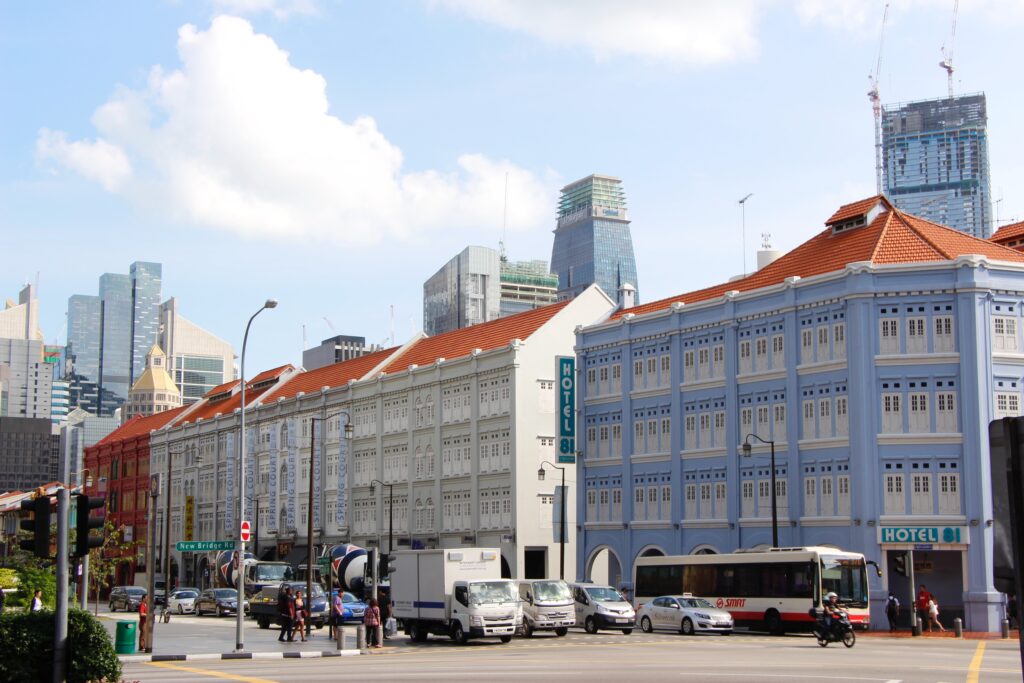
Best Time to Visit Singapore
While it can be challenging to choose the ideal time to visit Singapore, the weather is straightforward: hot and humid. The island is subject to two monsoons, one from the southwest (May-Sept) and the other from the northeast (Nov–March), bringing a lot of moisture from the South China Sea. As a result, December and January tend to be the misty months, although rain can fall at any time of year; for instance, during the southwest monsoon, there are frequently predawn squally storms sweeping across from the Straits of Malacca. Due to the lack of breezes, the months between the monsoons of April and October have the propensity to be very oppressive. A sunblock and an umbrella should always be carried on you as protection from Singapore’s unpredictable weather.
Accommodation
The choice of accommodations in Singapore will satisfy you, despite potential pricing discrepancies. Numerous luxurious hotels, like the Raffles and the Fullerton, as well as skillfully maintained, albeit unremarkable, no-frills and mid-range hotels, can be found on the island. A few of these hotels ooze colonial splendor. While some of the more reasonably priced establishments tend only to feature a scattering of antique furniture, the greatest of the upstart boutique hotels have an unconventional or opulent design approach. The line between hostels and guesthouses is hazy, but both types of accommodations are plentiful and include some private rooms and inexpensive bunk beds.
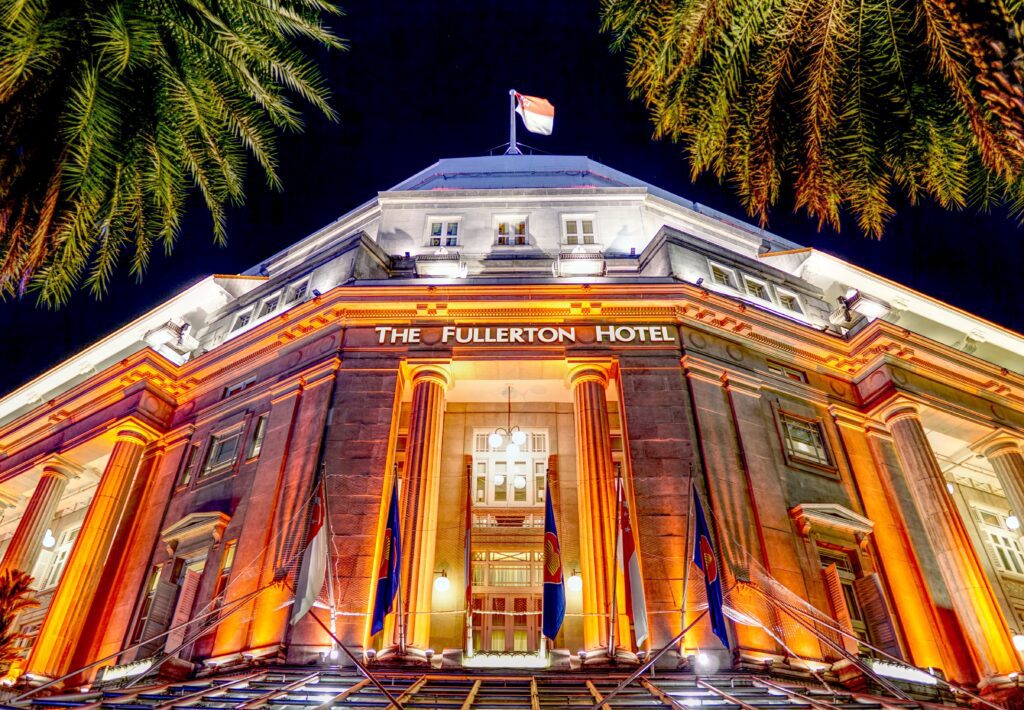
Activities to do in Singapore
- Take a Night Safari in Singapore Zoo
Every year, thousands of tourists flock to the Singapore Zoo, a fantastic destination in and of itself. The zoo is one of Singapore’s finest treasures, with more than 1,000 animals from 3,000 different species. It ranks among the best nighttime activities in Singapore. By going on a zoo night safari, you can, however, enhance your zoo visit even more. A must-see component of your Singapore Zoo Night Safari agenda is the Creatures Of The Night Show.

- Pay a visit to Little India.
You will be relieved to learn that Little India will live up to your expectations if you find the name fascinating. Due to its shopping booths, Indian street food, and well-known Hindu temples like Sri Veeramakaliamman Temple, the chic tiny commercial district stands out dramatically from the rest of Singapore.
- Fun Day at Universal Studios
Universal Studios is undoubtedly at the top of Singapore’s list of family-friendly activities. Between Battlestar Galactica and The Lost World of the Dinosaurs, the fantasy film studios are the home of everything. Additionally, the studios are home to some of Sentosa Island’s most excellent dining establishments. Additionally, the studios are littered with shops where you can find one-of-a-kind memorabilia inspired by your favorite movies.
- Birds Eye View of City
If you are traveling with children in Singapore, they might find this activity as exciting as you do. With a height of 165 meters, the gigantic observation wheel known as the Singapore Flyer provides breathtaking views of the entire city. A journey on the observation wheel also includes a crash course in the technology that went into building Asia’s most excellent enormous wheel and some background information on Singapore’s history and urban development.
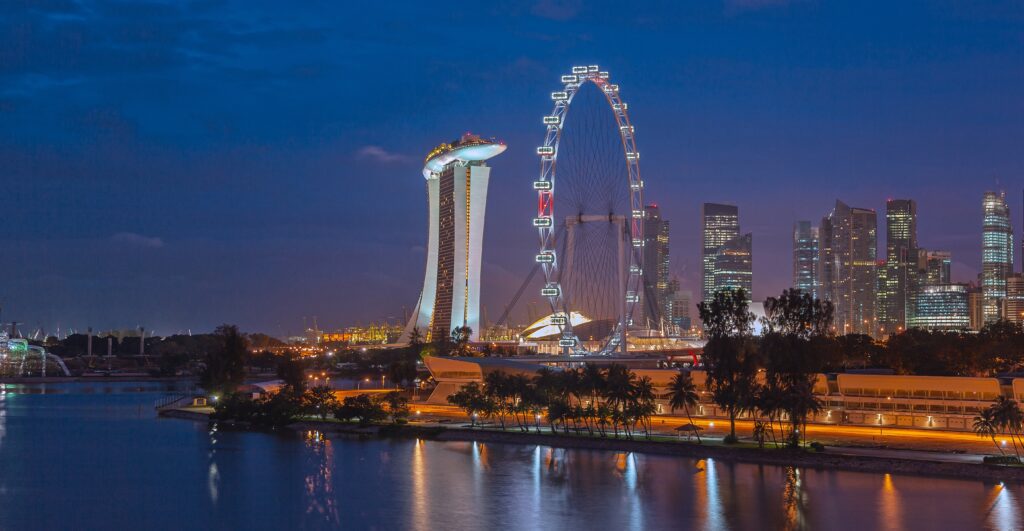
- Visit Urban Jungle
Don’t worry; the jungle we’re referring to isn’t constructed of concrete. You read it correctly. It’s Gardens By The Bay that we’re discussing. The garden contains some gorgeous conservatories, and one of the finest things to do in Singapore is to walk across the magnificent skyway it has. Take a stroll through the Supertrees, take in the zany sculptures, and wonder about the futuristic biodomes.
Tips for Shopping in Singapore
Singapore shopping is enjoyable because of the variety and ease of getting what you want. Yet, because of the island’s wealth and robust currency, most items are priced at levels expected in the West. The Great Singapore Sale, which takes place from late May to late July and is advertised on gss.sra.org.sg, is the ideal time to shop for deals because prices are reduced across the island. The most extensive collection of malls, packed with designer labels, can be found on Orchard Road, as could be expected. The most intriguing malls in Chinatown are more like multistory markets with a few traditional shops selling Chinese delicacies, medicines, instruments, and china. Malls elsewhere tend to be more casual. It’s also important to pay attention to Singapore’s remaining shophouses, as many of them continue to be the location of independent shops that offer goods like books, jewelry, and souvenirs.
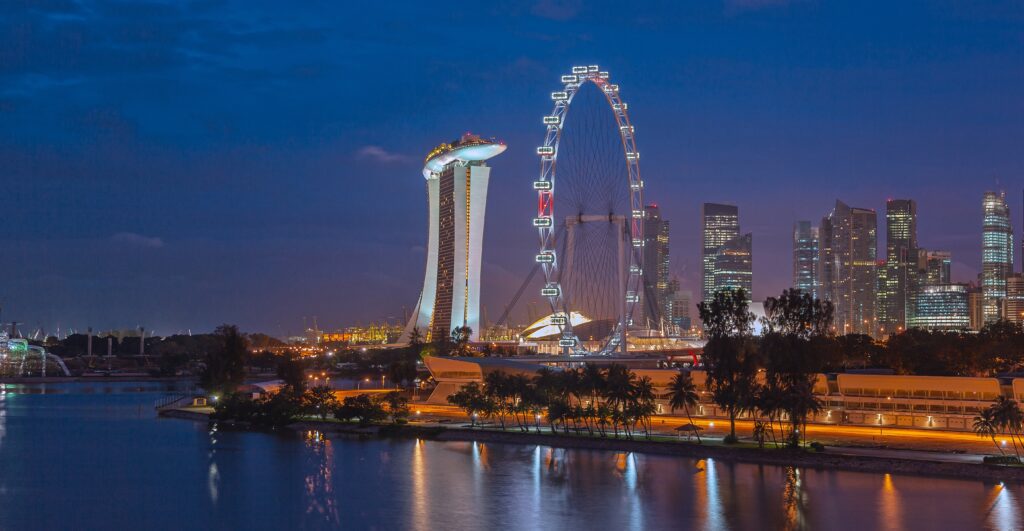
Travel with children in Singapore
Children may perceive Singapore as a vast theme park because it is modern while still feeling exotic. A simple stroll through Little India or even Orchard Road should provide them plenty of entertainment. Different kids will react differently to the Hindu and Buddhist temples described throughout this book. Some kids will be completely enthralled by them, while others will find the vibrant statues and religious rituals boring. While traditional celebrations are typically enjoyable, Thaipusam is one occasion that could frighten some young children. Additionally, Singapore is home to several theme parks, including the enormous Sentosa (see Chapter 9 for more). The Forum shopping center on Orchard Road is home to a concentration of upscale stores focusing on children.
Festivals
It would be unusual for your vacation to Singapore not to coincide with a traditional holiday, as many different ethnic groups and religions are present there. Many stores and restaurants may be closed during festivals that are also recognized as official holidays. These festivals can range from raucous, family-friendly pageants to horrifyingly bloody displays of devotion. The major festivals in Singapore are listed in chronological order below, along with recommendations for where to attend each one (except commercial events with a commercial theme, like those centered around shopping or the arts, which are covered in the relevant chapters). We’ve included general timings, but it’s best to verify with the Singapore Tourism Board for exact dates, as many of these have lunar calendars that vary yearly.
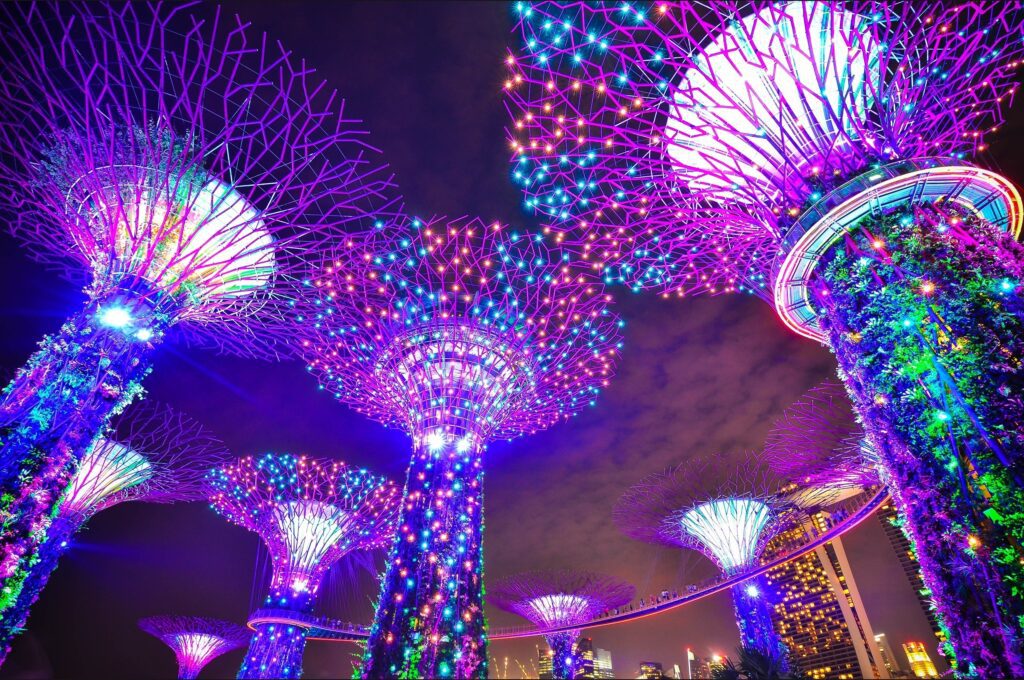
Drinking and Nightlife
The best DJs in the world are consistently attracted to perform at some locations. Due to its wealth and sizable ex-pat population, Singapore is home to a wide variety of bars, from opulent colonial chambers to hip rooftop venues with skyline views to slightly tacky places with karaoke or average covers bands. Several flashy and energetic clubs are also available, where patrons may let loose to the newest tunes without using illegal narcotics because this is Singapore.
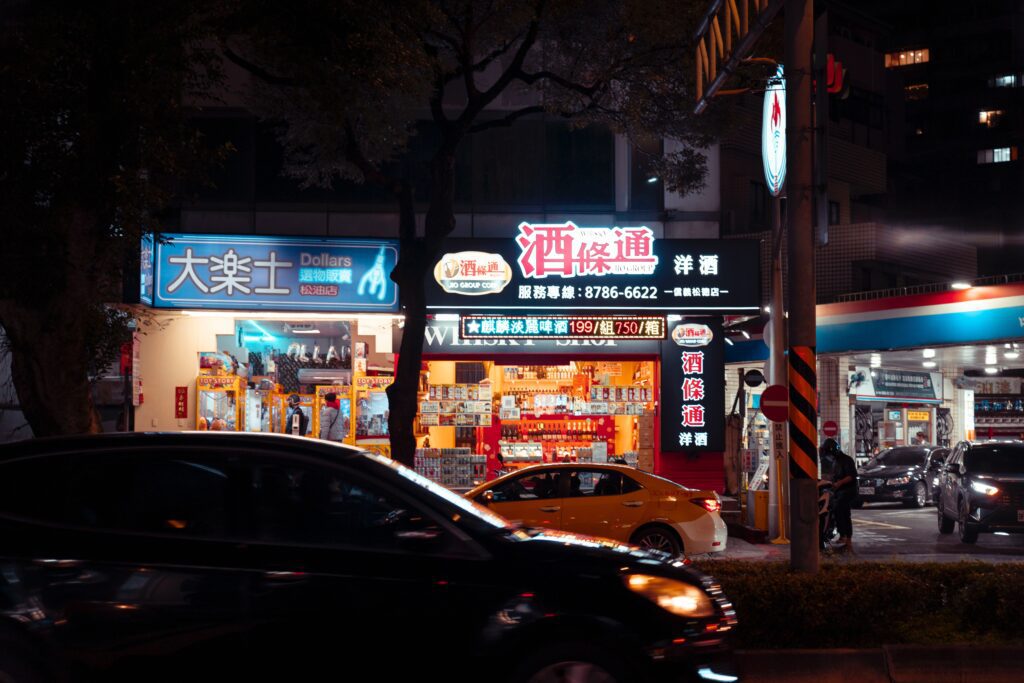
Street Theatre
If you spend enough time wandering around Singapore, you’ll probably come across some street-side cultural event, most frequently a wayang, the Malay term used to refer to Chinese opera. Wayangs are theatrical and stylized productions performed outside, close to temples and markets, or in public areas of new cities. They feature garishly created characters acting out well-known Chinese legends to the sound of gongs and cymbal crashes. The most significant time to see one is during the Festival of the Hungry Ghosts when they are held to amuse passing spooks. They are staged throughout the year. Puppet theatres may also develop around Chinese New Year, when lion dancing, another intriguing traditional entertainment, goes to the streets.
